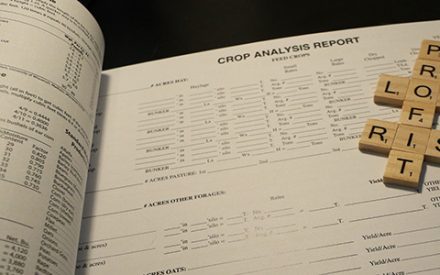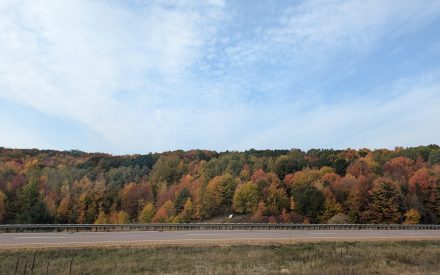Video Summary
In this Ag Weather Outlook for June 26, 2025, Josh Bendorf from the Wisconsin State Climatology Office provides a detailed update on recent weather patterns and their impact on agriculture across the state. The presentation highlights significant rainfall events, regional precipitation disparities, soil moisture trends, and current drought conditions.
Josh also reviews temperature trends, growing degree day accumulations, and crop progress for corn and soybeans. Looking ahead, he discusses the 7-day forecast, potential flood risks, and heat advisories, along with 8–14 day and 30-day outlooks for temperature and precipitation. The update concludes with a plug for the expanding Wisconet weather station network.
Resources
- Wisconsin Ag Weather Outlooks
- Wisconsin State Climatology Office
- Wisconet station locations
- Wisconsin Crop Progress and Condition Report from USDA (NASS)
- Crop Conditions & Soil Moisture Analytics (NASS)
- Runoff Risk Advisory Forecast (WI-DATCP)
- NWS Milwaukee Freeze Risk Tool
Transcript
0:06
All right.
0:06
Thanks, Chris, and good afternoon, everybody.
0:08
Like Chris said, my name is Josh Bendorf.
0:10
I work as the climate outreach specialist for the Wisconsin State Climatology office in the Division of Extension.
0:16
I’ll be delivering your AG weather update today as part of the Badger Crop Connect series.
0:20
This is a abbreviated version of our AG Weather Outlook for Wisconsin, which you can find on the Crop and Soil Extension website.
0:29
The most up to date version should be coming out either later today or early tomorrow.
0:37
So getting into precip, we had a little bit of rain last week.
0:41
It was an active week for precip that brought multiple days of rainfall to most of Wisconsin.
0:46
As you can see here from this map, from June 17th through the 24th is when I updated this.
0:53
Across most of the state we had anywhere from three to five days of measurable precipitation.
0:59
Where in some of those areas you see there with higher totals, we even had five days or more.
1:03
So most days last week, there was at least some rainfall falling across as part of Wisconsin.
1:08
2 to 4 inches was common in the southwest and South Central part of the state.
1:13
Those areas you can see there on this map in yellow and in orange with some pockets of greater than 4 inches or even greater than 5 inches.
1:20
In some of those areas you see there highlighted in red that had storms training over the same area for several hours, particularly on Monday night.
1:28
That’s when we saw some of our heavier rainfall totals.
1:31
Totals were lower in the northwest part of the state, Those areas there in blue, which are estimated at about 1/2 inch or less.
1:39
The maximum total that was measured from last week was down in Clinton in Rock County and that came in at just under 7 inches.
1:47
So pretty impressive totals down there by Clinton.
1:51
We’ve had some additional rainfall since the 24th, so I updated this just this morning.
1:56
This is showing that another two inches or more has fallen across parts of the state since Tuesday.
2:01
So the active weather pattern has continued.
2:05
You see there are areas in yellow around Lacrosse and then parts of a NW North Central Wisconsin.
2:10
And we had another additional quarter inch to an inch fall in the southwest on those areas that had received very heavy rainfall on Monday night.
2:18
And the maximum total over the last two days was in at in Monroe County at the Tomah Ranger Station, about 5 1/2 inches.
2:26
So again, some pretty impressive totals coming from these systems.
2:32
So what does our precip look like since our last Badger Crop Connect series 2 weeks ago?
2:36
Image there on the on the left shows our two week rainfall totals.
2:41
We had a bullseye of about four inches or more down there in Southwest Wisconsin.
2:44
Those areas they’re showing up in blue and in purple.
2:47
And those totals for this period
2:50
Were 150% or more of normal, sometimes in some instances more than double the total precip that we would expect to see from June 12th to June 25th, 2 1/2 inches or more was common across the southwest and in the northwest, North Central, those areas shaded in green.
3:07
This was just a little bit above normal for this time of year.
3:11
And outside of those areas, it’s been below normal.
3:14
70% or less of normal in those areas on the right hand map in dark orange or red that saw less than two inches of precip over the last 14 days.
3:26
So kind of feast or famine depending on where you’re at in Wisconsin, looking at 2025 precipitation total so far and how that compares to 30 year averages.
3:36
Even with that heavy rainfall that we’ve received over the past few days, we still have a lot of ground to make up, especially down in the southwest part of the state and and around the Illinois border, where we in some instances, we have 3 inches or more precip deficit since the start of 2025.
3:53
But, but despite this, we’re not seeing any instances of like really dry soils in the state, at least according to this model that’s from NASA.
4:01
Most of Wisconsin is running at near normal soil moisture levels in the top 1m of soil.
4:07
Those areas shaded there in Gray are areas that have normal soil moisture for what we would expect for the end of June.
4:14
There is some abnormal wetness scattered across the state, particularly where those rainfall totals were higher last week.
4:20
In parts of the Southwest in particular, there’s been reductions in abnormal dryness in the South following those multiple days with rain over the past week and last week’s report, we had a lot more areas down there in the South that were showing up in yellow or orange indicating abnormal dryness.
4:36
We’re not seeing that in this week’s report and NASA’s reporting 70 to 75% of topsoil in the state at adequate moisture levels.
4:48
This is a chart I put together using some WISCO net soil moisture data for the different AG research stations that we have here in Wisconsin.
4:55
Comparing current soil moisture levels in the four inch, the top 4 inches of soil, how that compares to the beginning of our corn soybean growing season, which I’m approximating to be May 1st and then how this compares to late June last year.
5:09
What we’re seeing is that across most WISCO net research farm stations, soil moisture levels in the top few inches are lower than at the start of the growing season as well as this time last year.
5:22
But that doesn’t mean that we’re dealing with any kind of substantial drought in the state right now.
5:26
In fact, only 2.6% of the state right now is showing up as a D1 or moderate level drought.
5:34
And about 24% of the state is abnormally dry kind of located down in the far South and far north parts of the state.
5:42
And you can see on the map in the lower right that we did have some improvements in drought conditions in the south last week due to those rainfalls that we had.
5:51
Turning now to temperature, these maps are showing up as very red because it’s been pretty warm over the last several days.
5:58
Average temperatures range from about kind of in that mid 70s range in the in the southern 2/3 of the state and that drops off to about mid 60s up along Lake Superior.
6:09
Keep in mind this is this is average temperatures.
6:11
I mean, so that’s not accounting for how high that temperatures have gotten during the hottest parts of the day.
6:16
We’ve had daily highs in the 90s on multiple days in the southern 2/3 of Wisconsin last week.
6:23
In some instances, 4 days or more for some down in the far southeast corner of the state.
6:28
And it’s been above normal across the board in the state of Wisconsin over the last seven days.
6:34
In some instances, 6° or more above normal resulting from this heat wave.
6:38
And this has been coupled with some very high humidity as well.
6:42
And what this is meant for growing degree days is over the last few AGWWOWs that we’ve put out, we’ve said we’ve been saying that we’ve been kind of lagging behind growing degree accumulation since May 1st.
6:53
This warmth that we have had has kind of helped get things up to near normal.
6:57
Most of the state right now is running within ±20 growing degree days of normal.
7:03
So now we were lagging behind, but thanks to the heat, now we’re closer to where we would expect to be for this time of year.
7:10
Corn, soybean progress emergence is just about complete, running right about near to average.
7:16
There has been some soybean blooming reported in some isolated parts of Wisconsin, about 3% complete, which is normal for this time of year.
7:25
And conditions are right around 75% good to excellent with some gains from last week thanks to those warm humid conditions that we’ve been having.
7:35
Turning now to the outlook 7 day precip, we have another active seven days on tap.
7:41
Our most active days for precip over the next few days are going to be Thursday, Saturday and Sunday.
7:46
Those are most likely days for rainfall.
7:49
The highest chances for precip are going to be kind of in that West, central and northwest part of Wisconsin.
7:55
And be sure to, and I always say be sure to check your local forecast from the Weather Service or local TV station for more details on totals and timing for your community.
8:06
There is a flood watch in place for tonight for some of you in the southwest part of Wisconsin where we had those high rainfall totals from Monday night.
8:14
The forecast is that there’s going to be some more heavy rainfall that could be impacting this region later this evening.
8:20
So just keep your eye on that.
8:24
We have some heat risk as we move into the weekend, especially on Sunday.
8:29
Just be aware if you’re doing any outdoor activities that it’s going to be warm and humid.
8:34
So just make sure you stay hydrated, give yourself time to get cooled off, things like that.
8:40
Our 8 to 14 day outlook though doesn’t indicate that we’re going to be having any kind of extreme heat as we head into the first part of July.
8:48
Temperatures are leaning towards near normal for most for all of Wisconsin with a slight lean towards above normal precipitation.
8:56
Not a strong indication of above or below normal either way, kind of kind of a wash, but just something to keep an eye on.
9:03
And then 30 day temperature and precip outlooks.
9:06
This is for the month of July.
9:07
This came out on June 19th.
9:09
Temperatures are leaning towards being above normal, more so as you go to the north and there is uncertainty for precip with equal chances for above, near or below normal precipitation.
9:21
And before I wrap up here, I just want to put in a quick plug for Wisconet that last week, there were four more stations added in the state and we’re now up to 69 Wisconet stations.
9:30
You can see there on the map the stars where new stations were added.
9:33
These were up in the northern part of the state.
9:35
So slowly but surely, we’re getting our network complete here in Wisconsin.
9:40
And so with that, I’ll wrap up and turn it back over to Chris.
9:43
And if you have any questions for me, please enter those into the chat.
9:47
Thank you.
9:48
Again, Josh, I know even before you came on that the topic of weather was what a lot of us were talking about as we were testing technology in the background.
9:58
So we do appreciate your efforts with that.
10:01
And again, be sure to check out the website.
10:04
And if you’re not a subscriber of this e-mail that comes out, it has his information plus a lot more that they’ve gathered.
10:11
This was just a short little summary of it.
10:14
And they’re great to print out and use in other presentations that you might have with farmers.
10:21
So thank you, Josh.
Badger Crop Connect
Timely Crop Updates for Wisconsin
Second and fourth Thursdays 12:30 – 1:30 p.m.
Live via Zoom

 ▶ Fall 2025 Financial Assistance for Producers
▶ Fall 2025 Financial Assistance for Producers ▶ Fall 2025 Ag Policy Update
▶ Fall 2025 Ag Policy Update ▶ Fall 2025 Corn and Soybean Market Outlook
▶ Fall 2025 Corn and Soybean Market Outlook ▶ November 6 Ag Weather Outlook for Wisconsin
▶ November 6 Ag Weather Outlook for Wisconsin


